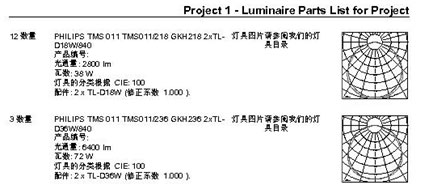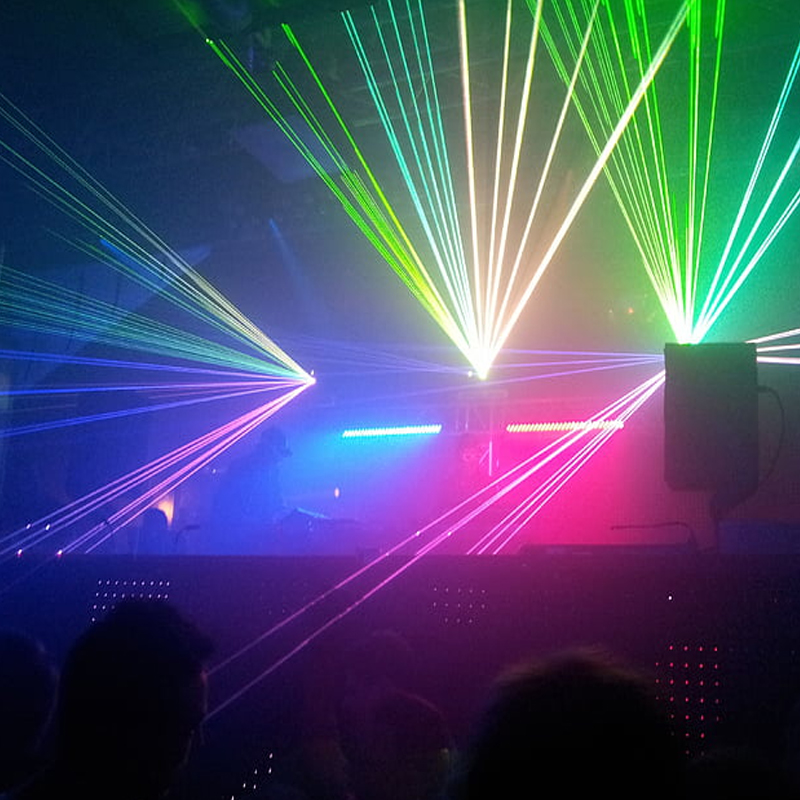At present, architectural lighting design is accustomed to the use of empirical methods to arranging luminaires, and then rough selection, with less concern for the evaluation indicators of design results. For this reason, the acceptance of lighting engineering has not used quantitative indicators to evaluate the design's good and bad, as long as it can be lit, there is no failure. Even some large theater projects, foreigners professional design, the audience hall is obviously insufficient, and no one cares. It is necessary to fundamentally change this situation in architectural lighting design. Building lighting auxiliary design with lighting-specific calculation software should become a basic requirement.
The country has begun to implement the "Architectural Lighting Design Standards" GB 50034-2004, the "standard" has the following main provisions:
1. The illuminance level specified in the Standard has been greatly improved, and the average illumination standard value of general lighting has increased by about 50% to 200%. At the same time, the "Standard" stipulates that the lighting power density (LPD) of general lighting in a room or a place is used as an evaluation index of lighting energy saving. The two-pronged approach ensures a reduction in the overall electrical load of the lighting.
2. The new standard also stipulates that in general, the design illuminance value may be offset from -10% to +10% compared to the illuminance standard value.
3. The Standard specifies the uniformity of illumination. Generally, the uniformity of illumination illumination should not be less than 0.7, and the uniformity of illumination around the work surface should not be less than 0.5.
4. The Standards stipulates that the color rendering index of the illumination source should not be less than 80 in the room or place where the work or stays for a long time.
5. The Standard specifies glare limitations, which are important for reducing visual fatigue, satisfying visual comfort and improving work efficiency.
In order for the results of the lighting design to meet the above requirements of the specification, it is almost impossible to rely on experience or manual calculation. The following authors use the lighting design of an ordinary classroom as an example to introduce how to use DIALux special lighting calculation software for auxiliary design. (The information quoted below is derived from real calculations)
General classroom lighting design requirements:
1. The average illuminance standard of the working face is 300LX; the average illuminance standard on the blackboard is 500LX. Calculated within the deviation range of -10% to +10%.
2. Considering that there is no student work around the classroom, the uniformity of classroom illumination should not be less than 0.5, and the 0.7 indicator is not used. ;
3. The glare UGR value is greater than 19; 
Step 1: Open DIALux3.1.5.1light, an interface for project information appears. The main content is to input the project, location and designer information. After filling in, click NEXT to enter the data input.
Step 2: Data entry includes room geometry, reflection coefficient on several sides of the room, maintenance factor, calculation of grid size, selection of fixtures, and determination of fixture installation. Among them, the choice of lamps can be selected according to the needs of the project. At present, the technical data of many foreign lighting products can be selected through the DIALux plug-in, PHILIPS, OSRAN, THORN, etc.; domestic NVC lighting also plug-in can be selected. For the luminaire products that have not been plugged in, you can refer to the related products of the plug-in.
We assume that the classroom is 10.5 meters long, 8 meters wide and 3.2 meters high. The working face is set at 0.75 meters. The reflection coefficients of the ceiling, floor and wall of the classroom are 0.7, 0.5, and 0.3, respectively. The use environment is cleaner. Philips TMS011+GKH type lamps are used, and the light source is a 2*18W straight tube fluorescent lamp.
Step 3: Arrange the luminaires. According to the illuminance standard, the arrangement of the illuminance on the working surface is initially calculated after temporarily adjusting the distance between the lamps by three rows and four columns. After the calculation is complete, the computer screen will display the illuminance plane distribution and illuminance value list results.
Step 4: Output the calculation result. (see photo to the right)
Usually we will save the calculation results in PDF format for easy reference. Considering that the average illumination on the blackboard in the classroom lighting design is relatively high, it is difficult to meet the requirements of general lighting, and the local lighting design should be used. Therefore, the file should also be output as an editable file, that is, saved as a DIALux project.
Step 5: Open DIALux and enter the editing design.
1 Adjust the layout area of ​​the above general lighting fixtures and let the distance of 0.7 meters in front of the classroom be partially illuminated.
2 Insert the local lighting fixture. Here, three Philips TMS011+GKH lamps are inserted in front of the blackboard, and the light source is a 2*36W straight tube fluorescent lamp. In order to produce a good illumination on the blackboard, the lamp was turned 45 degrees in the direction of the blackboard.
 |
3 After completing the above work, you can click on the calculation;
4 Set the contents of the output parameters and output the calculation results.
| The layout of the lighting fixtures in the classroom is as follows: | The calculation results for each surface and working surface are listed as follows: |
 |  |
| Illumination value distribution on the blackboard: | The distribution of illuminance values ​​in the classroom work surface: |
The unit is Lux ratio 1:75 |  |
From the process of computer-aided design using special lighting calculation software, the design is not completed in a cycle, the arrangement of the lamps, the selection of the light source parameters, the insertion of local lighting, etc., and the trial and error of the calculation software should be used for trial and error. And finally get satisfactory results.
In this case, through computer-aided design, the design indicators fully meet the requirements:
The average illumination of the classroom work surface reaches 304LX;
The average illumination of the blackboard surface reaches 511LX;
The uniformity of illumination in the classroom is 0.51;
Classroom glare UGR value is 24;
The illumination power density (LPD) value is 8 W/m2.
This series is an effect maker on the stage, including laser lights with multi-segment shape changes, electrodeless lights with sudden changes in color angles, matrix lights that can display fixed patterns or letters, etc., both in color and light shape. outstanding effect. The laser light has been edited to show a 3D stereoscopic effect. With the delay effect in the venue, the laser light with strong penetrating power can show a more beautiful effect. If you want the stage to be more cool, the effect light series is also an essential option.

Stage Effect And Laser Lights,Laser Light,Disco Laser Light,Sky Laser Light
Guangzhou Cheng Wen Photoelectric Technology Co., Ltd. , https://www.ledscreencw.com
